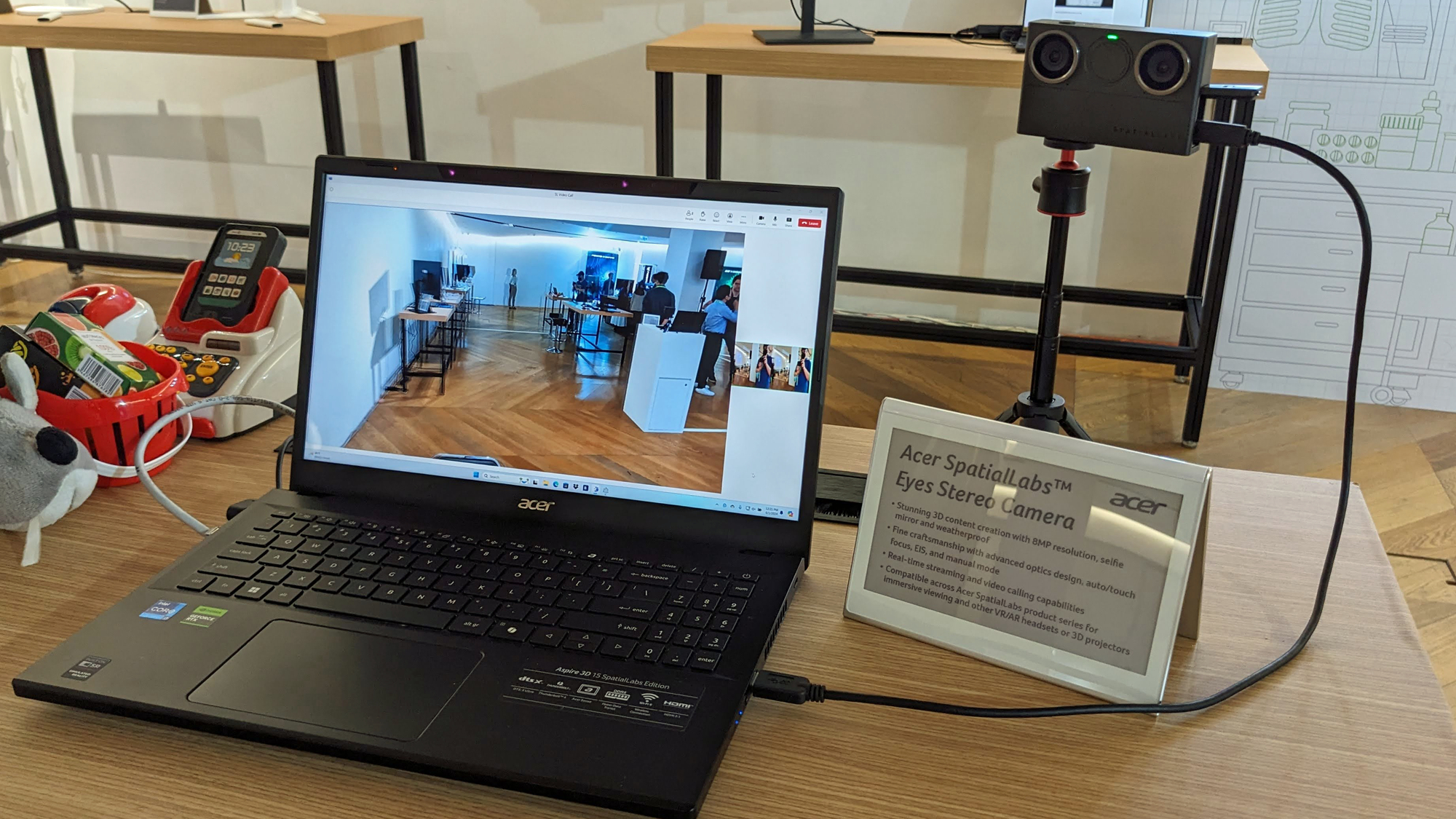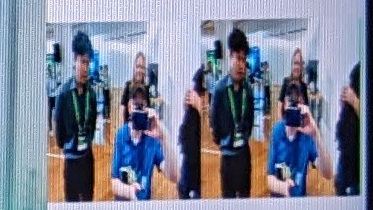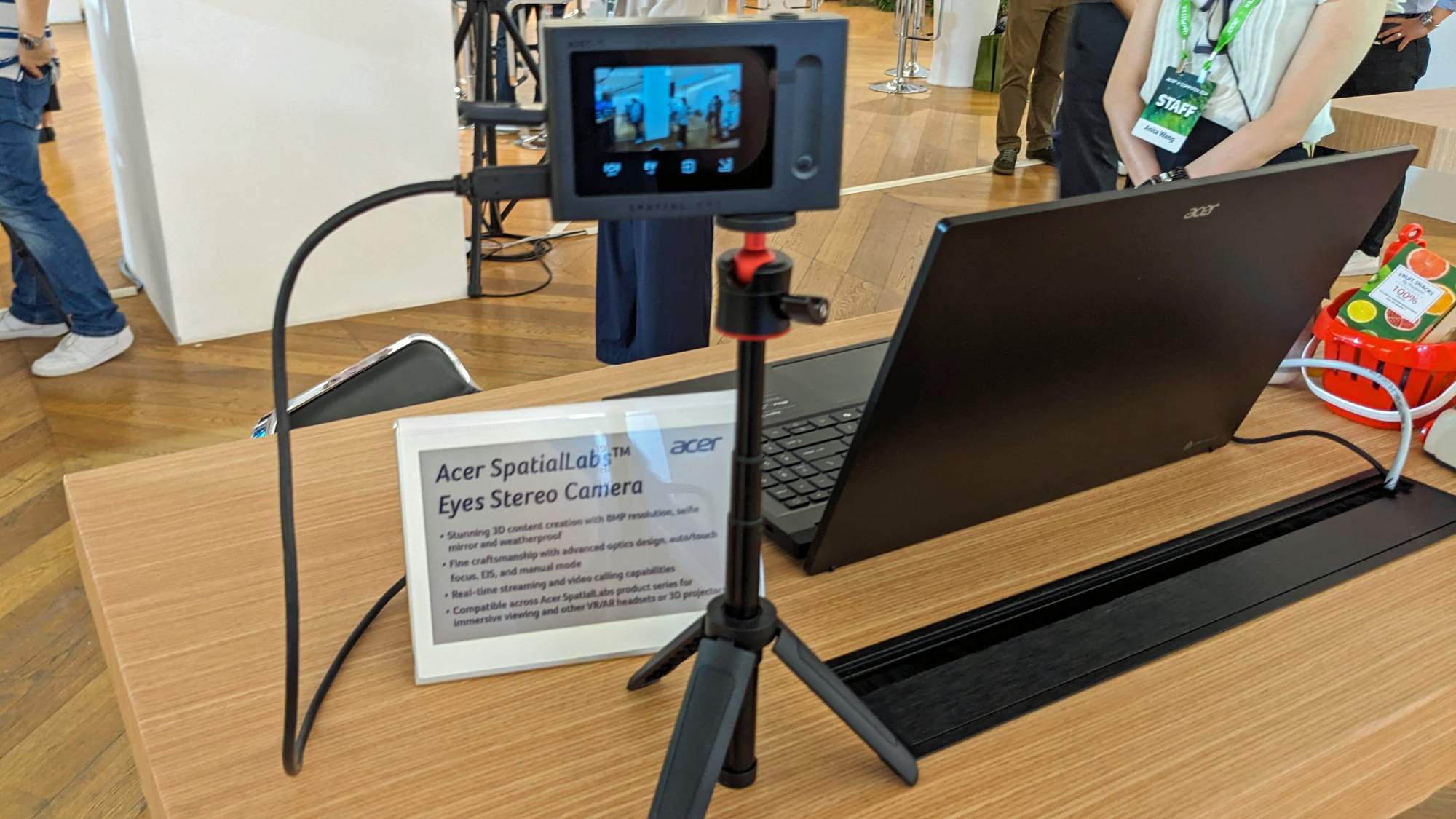3D call me maybe: Acer’s new SpatialLabs camera live streams impressive 3D video in 8K, but few can view it
The $549 camera works best when paired with the company’s 3D monitors or laptops.

Acer has been a leader in glasses-free 3D screens for a while now, having released a series of monitors and laptops under its SpatialLabs brand. Now the company is providing a means to create content for these displays, the SpatialLabs Eyes, a stereoscopic camera cable of capturing at up to 8-MP (aka 4K) per eye at 30 fps or 2K per eye at 60 fps. Available within the next few weeks for $549, the Eyes can record still images or videos either to a microSD card or, via USB connection, directly to your computer where it can also make video calls.
I had the chance to go eyes-on with the Acer SpatialLabs Eyes at Acer’s Computex 2024 media suite and I was impressed with the output, though fully aware of the challenges this intriguing technology faces. Acer had a nice demo where the camera was pointing at a Lego city that had a model Godzilla stomping it. I stood in front of one of the SpatialLabs View 27 monitors and looked at a live feed where the Godzilla figure and Lego blocks appeared to pop out of the screen slightly. The objects looked like they were at different depths with Godzilla clearly in front of the Lego buildings that were behind him.
Then I went over to another demo station where a SpatialLabs Eyes camera was connected to a computer and an Acer booth assistant called me from a different computer in another part of the room. As she waved some small toys in front of the camera, I could see them pop out of the screen.
But there was also a catch: when my colleagues stood next to me, the View 27 monitor’s output became a little blurry because the eye tracking was confused by having multiple people in front of the screen. These glasses-free 3D monitors have cameras that track your eyes and, if they detect more than one pair of pupils, it can mess up the images.
Acer reps explained that the way the camera works is that it actually shoots dual, side-by-side images, which the monitor then turns into a 3D image. If you look at the video feed or images on a non-3D monitor, you’ll see two, nearly-identical images next to each other, which is not a good user experience. During my video call, the side-by-side images of me were displayed in a preview window, which you can see below.
To see the 3D output, you either need one of Acer’s View monitors or laptops or something else that can turn side-by-side images or video into 3D. Acer reps said that if you view them in a VR headset, these images should also appear as 3D.
But if you want one of Acer’s monitors, it will cost you. The company has two 27-inch monitors, a 15-inch portable monitor and a pair of laptops with the glasses-free screens. The portable monitor alone is $1,099 and the gaming version of the 27-inch monitor, which was announced at CES, is supposed to be about $1,999 (but we haven’t seen it listed for sale yet).
Get Tom's Hardware's best news and in-depth reviews, straight to your inbox.
We reviewed the Acer SpatialLabs View portable monitor back in April of 2023 and lauded its 3D output and image quality. However, $1,099 is a lot for any monitor, especially one that's just 15.6 inches.
Acer reps told us that several programs, including Microsoft Teams and Google Meet, already support 3D calls. But to make a 3D call on them, both users obviously need the hardware. So, at minimum, we’re talking about two cameras at $549 each and two portable monitors at $1,099 each. That’s more than $3,000 just to get this going on a 15-inch display.
An Acer rep told us that the camera can operate in 2D mode so, in theory, you could buy the Eyes and use it to do regular, 2D calls, enabling 3D mode only when you are talking to someone else who can see the output. However, you can get one of the best webcams with 4K output for a lot less than $549 so only consider the SpatialLabs Eyes if you plan to use its 3D functionality.
It’s important to note that the Eyes is not just a webcam. It has a built-in battery that promises two hours of endurance and it has a microSD card slot. It features a f/2.0 aperture, 80-degree field of view and 3.0mm focal length, all solid specs for a camera. It captures still images as JPGs and movies as MP4 files.
So you can capture 3D images and videos on the go and then share them later. YouTube supports 3D, side-by-side videos so that’s one place you could share your outputs. And it’s possible that someone using an inexpensive VR headset could view them.
The output is certainly impressive and the Eyes camera itself, which is very compact and looks like an ultra-slim point-and-shoot, is easy to carry with you. However, in order to make it a worthwhile purchase, you’d not only need to be able to view stereoscopic 3D images, but also have an audience or call partners who can view them also.
On the bright side for 3D, Acer is hardly alone. Apple’s iPhone 15 can film spatial video and its Apple Vision Pro headset can view it. The Meta Quest 3 headset can also view spatial videos so it should work with videos that the Acer Eyes camera shoots.
Avram Piltch is Managing Editor: Special Projects. When he's not playing with the latest gadgets at work or putting on VR helmets at trade shows, you'll find him rooting his phone, taking apart his PC, or coding plugins. With his technical knowledge and passion for testing, Avram developed many real-world benchmarks, including our laptop battery test.
- Roshan Ashraf ShaikhContributing Writer
-
Notton My, how far we have come since the Nintendo 3DS' 640x480 dual cameras and 800x240 resolution autostereoscopic display.Reply -
thenein Sounds exciting because the lens have a good separation. The iPhone 15 Pro Max immersive video is disappointing to say the least. I also have a Finepix W3 3D camera with takes decent pictures but not high enough of a resolution. I can't wait to see a full review.Reply




